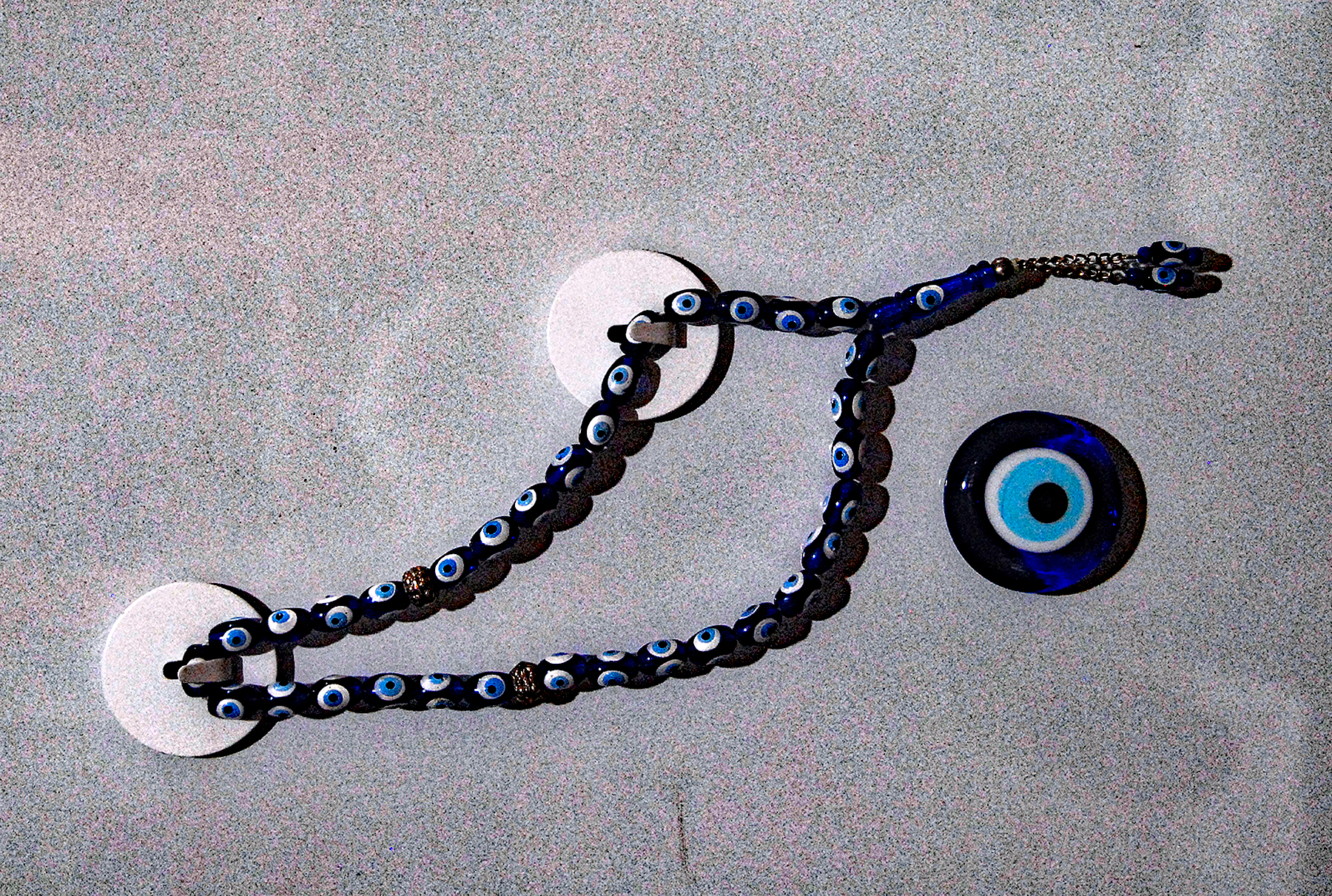On Garlic and Red Ribbons

Alexandria, VA – What do garlic and red ribbons have in common.? Were their purported protective properties just bubbe meises I heard as a child?
To begin, a bubbe meise is a term borrowed from Yiddish. It is an old wives’ tale, a superstition belonging to traditional folklore.
Here’s the backstory. This spring, the neighborhood cottontail rabbits considered my yard their personal salad bar. Their voracious appetites led them to devour my newly emerging, tender fern fronds down to the ground. They were also daintily trimming the indigo plants of all the leaves they could reach. Remembering that they had killed the black-eyed Susans I loved in previous years, this usually peace-loving person considered learning to make a stew from fresh-killed rabbits. Instead, I searched for rabbit repellents.
I tried a remedy I found online that reminded me of a bubbe meise I heard growing up. The remedy called for a gallon of water, to which was added four crushed garlic cloves, a teaspoon of crushed red pepper flakes, and a teaspoon of dishwashing detergent. It was steeped for two days in the sun and strained so it could be sprayed.
It worked! At least it’s working so far.
The memory that came back to me was of my beloved grandmother making us kids wear garlic “necklaces” to protect us from illness. I could find online references to garlic poultices. Per Bing, “Garlic poultices have been used for centuries as a natural remedy for infections. Garlic has antimicrobial properties that can help fight off bacteria and viruses….” But I couldn’t find anything about garlic necklaces or sachets, so I consulted my family and friends.
One friend wrote that a friend of hers (who died last year at 111-1/2!) told her when she was eight years old that her mother sewed bags filled with camphor and garlic for her and her seven siblings to wear around their necks during the 1918-19 Spanish flu pandemic. Another friend wrote, “When I was a child, I remember my grandmother making a ‘sachet’ of garlic for me to wear around my neck to ward off illnesses like polio. My grandmother called that a ‘red bindala.’ It would ward off all bad things.”
So, I wondered, was this a bubbe meise, or was this old wives’ tale grounded in fact? Probably, some of both.
What about red ribbons?
Another memory that came to me was of this same beloved grandmother putting red ribbons in baby cribs and carriages to ward off the evil eye. I remember a red ribbon on my sister’s crib and carriage pillows. My sister remembers our grandmother putting red ribbons under the crib mattresses of both of her sons. Also, she wrote, “It was put in new cars for luck.”
A friend wrote, “My mother-in-law was big into sewing red thread into all sorts of items around the house to ward off the evil eye.”

From Bing I learned, “Wearing a red string (preferably one that has previously been wound around Rachel’s Tomb in Bethlehem) on the left wrist is a Jewish folk superstition of unknown origin, thought to protect against the evil eye. It is commonly but mistakenly associated with Kabbalah1.”
According to Wikipedia, “The evil eye is a supernatural belief in a curse brought about by a malevolent glare, usually given to a person when one is unaware. The evil eye dates back about 5,000 years. In the 6th century BC, it appeared on Chalcidian2 drinking vessels, known as ‘eye cups,” as a type of protective magic.”
Several years ago, a friend returning from visiting Turkey brought me a gift of evil eye beads. The strand is too small for me to wear as a necklace, but I like displaying it in my in-home Serenity Place Gallery along with other talismans such as a Native American medicine pouch given to me by a cousin.
Today, you can buy a six-pack on Etsy of seven-knot Evil Eye Bracelets – “Protective Accessories for the Whole Family,” the ad says.
Bubbe meises? It may well be that one day we’ll see some of our current medical beliefs and treatments as Old Wives’ tales. Meanwhile, thank you to the cottontail that inspired this mental journey.
1Kabbalah is a part of Jewish tradition that deals with the essence of God.
2In the spring of 432 BCE, during the first phase of the Peloponnesian War, several cities of Chalcidice broke away from the Athenian-dominated Delian League.
Mosaic Artist-Photographer Nina Tisara is the founder of Living Legends of Alexandria.



